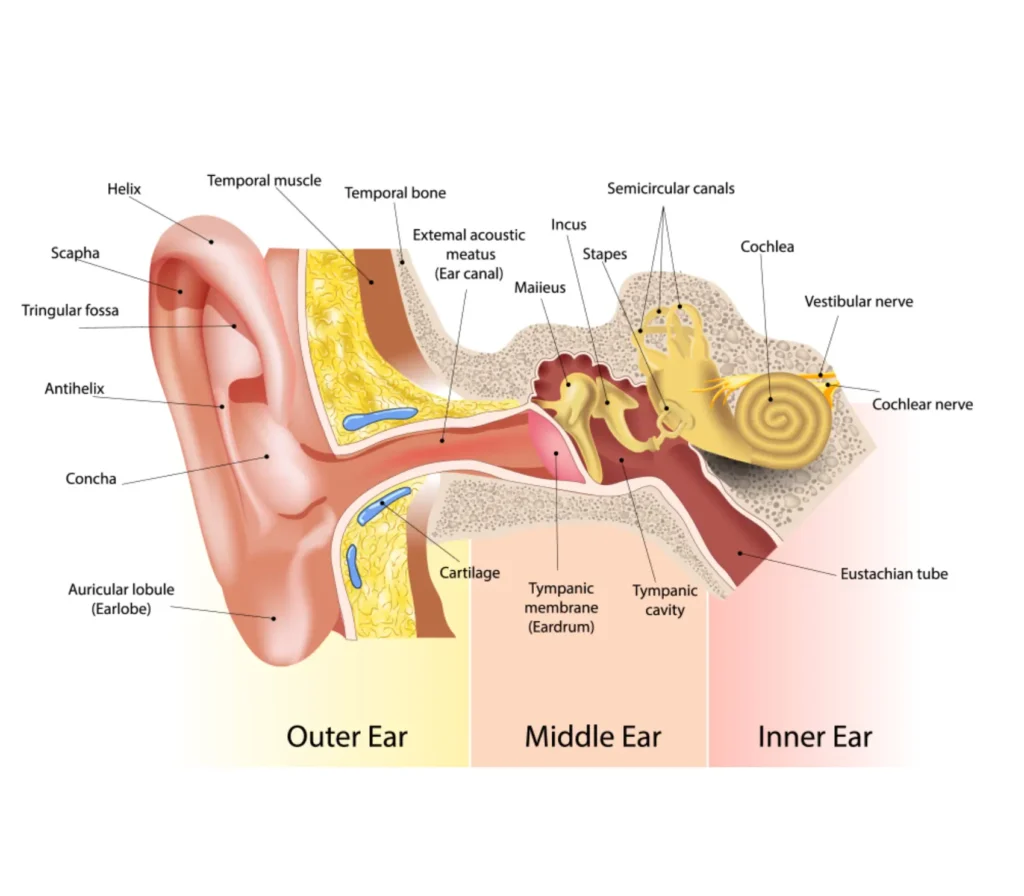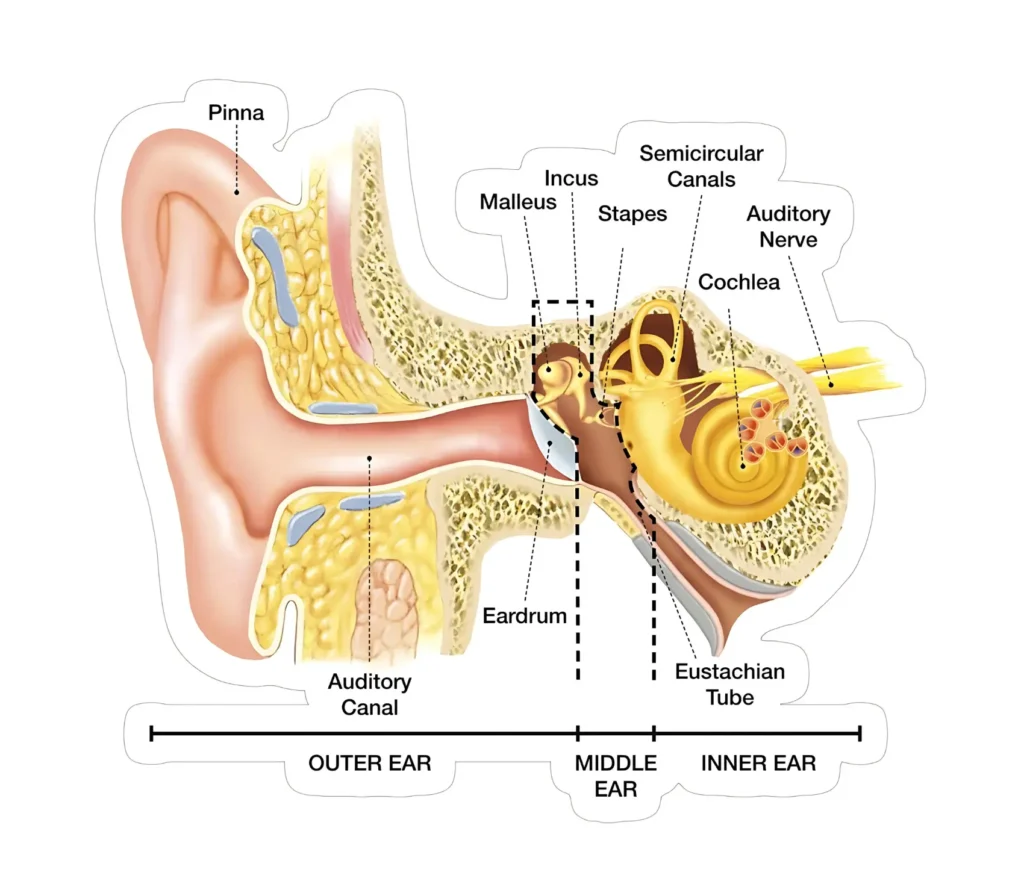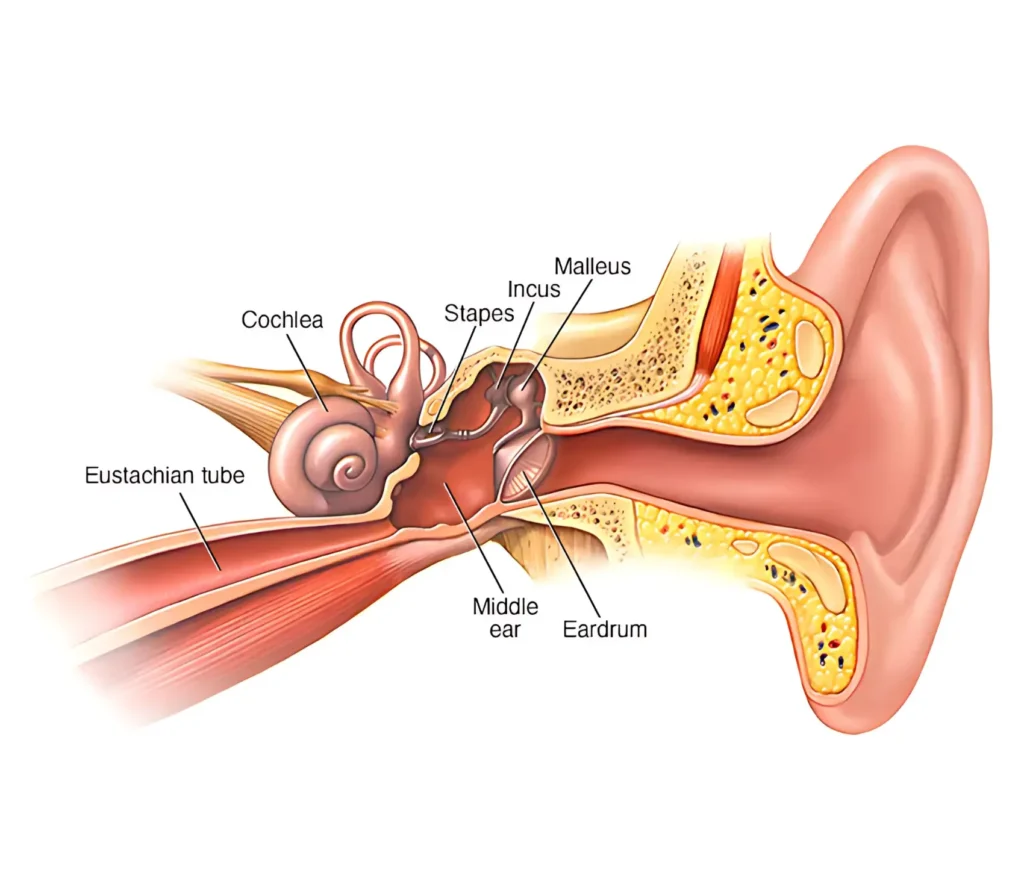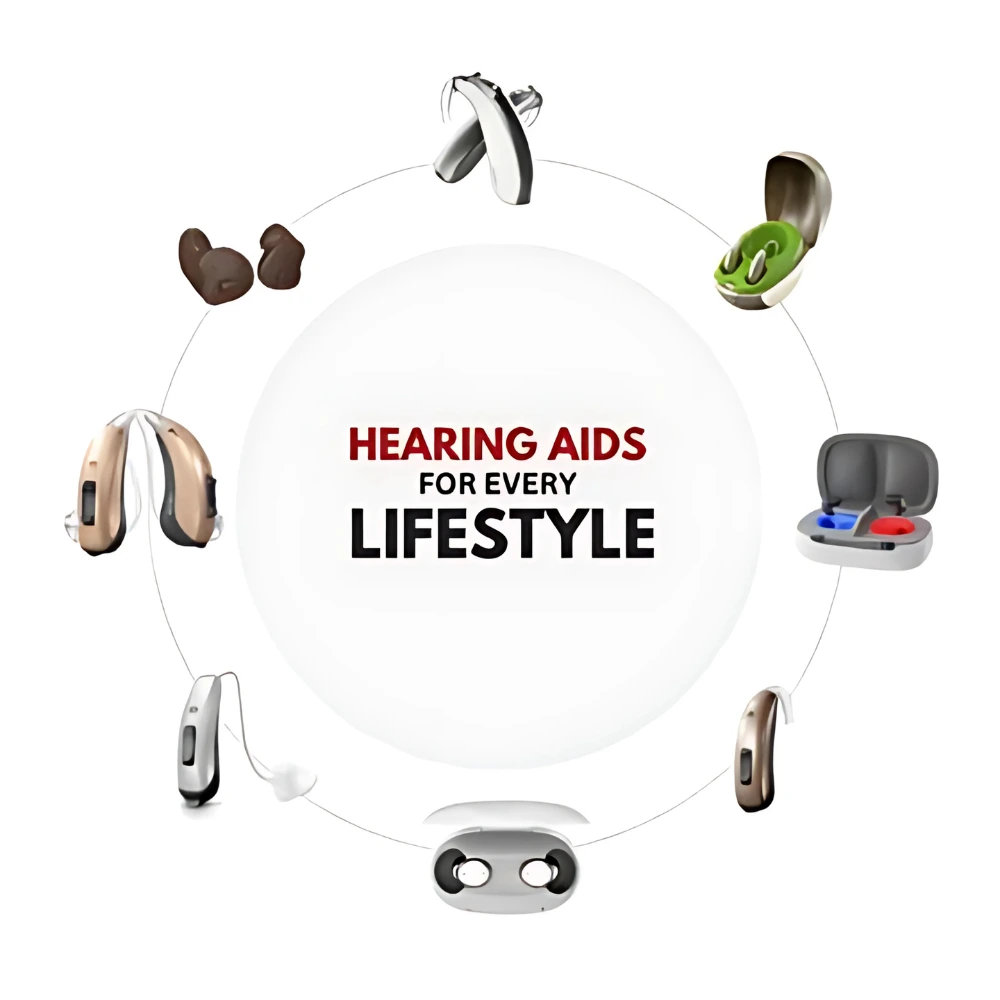Home » Hearing Loss » How Do We Hear
How Do We Hear?

What is Hearing and Why We Hear With Our Ears
What is the Hearing Process? How Do We Hear Sound Step-by-Step

Sound Collection
The parts of the ear, like the pinna, capture sound waves.

Vibration Transmission
The waves strike the eardrum, causing it to vibrate.

Ossicle Movement
The middle ear bones (malleus, incus, stapes) amplify the vibrations.

Signal Conversion
In the inner ear cochlea, these vibrations are converted into electrical signals.

Brain Reception
The auditory nerve transmits the signals to the brain, where we interpret them as meaningful sound.
How Can We Hear Sound? A Simple Overview of Sound to Brain Signals

Why Are We Able to Hear With Our Ears?
Parts of the Ear: Outer, Middle, and Inner
1. Parts of the Outer Ear:
- Pinna: Collects sound waves.
- Auditory canal: Funnel sound to the eardrum.
2. Parts of the Middle Ear:
- Eardrum: Vibrates in response to sound.
- Middle ear bones (ossicles): Amplify vibrations.
3. Parts of the Inner Ear:
- Cochlea: Converts vibrations to signals.
- Vestibular system: Helps with balance.
Parts of the Outer Ear
- Pinna: The visible part of the ear that collects sound.
- Auditory canal: A tube that transmits sound waves to the eardrum.
Parts of the Middle Ear
Parts of the Inner Ear and Their Functions
Cochlea
- Basilar Membrane: This membrane supports the hair cells inside the cochlea. It moves in response to sound vibrations.
- Organ of Corti: Located on the basilar membrane, this is the true sensory organ of hearing. It contains inner and outer hair cells that transduce mechanical energy into neural signals.
- Tectorial Membrane: A gel-like structure above the Organ of Corti. When the basilar membrane vibrates, the tectorial membrane helps stimulate hair cells to activate the auditory nerve.
- Auditory Nerve (Cochlear Nerve): Transfers electrical impulses from the cochlea to the brainstem, allowing us to perceive sound. Damage to this nerve can severely disrupt hearing perception.

Five Functions of the Ear
- Sound detection: The ear captures sound waves through the outer ear, which funnels vibrations into the hearing pathway for processing.
- Signal amplification: The middle ear bones amplify vibrations from the eardrum, allowing even soft sounds to be processed by the cochlea.
- Vibration conversion: In the inner ear, the cochlea function transforms mechanical vibrations into electrical impulses recognized by the brain.
- Balance maintenance: The vestibular system, part of the inner ear, helps us stay upright and oriented by detecting head movements and position.
- Auditory signal transmission: The auditory nerve carries sound signals from the inner ear to the brain for interpretation, completing the hearing process.
When the Hearing Process Breaks Down
- When the middle ear’s bones are stiff (otosclerosis) or infected (otitis media), sound doesn't transmit effectively.
- If the cochlea function is impaired or the auditory nerve is damaged, even clear sounds won't be interpreted correctly.
Talk to an Audiologist
FAQs
How do we actually hear?
We hear through a multi-step hearing process involving the outer, middle, and the inner ear cochlea, and the auditory nerve. Each part plays a role in transmitting and interpreting sound signals to the brain.
How are sounds made?
Sounds are vibrations created by moving objects. These sound waves enter the parts of the ear and are processed by the cochlea to be converted into electrical signals for our brain to understand
What is black noise?
Black noise refers to the total absence of sound, no audible frequencies or decibels. Understanding black noise helps audiologists differentiate it from meaningful signals in the hearing process.
Do ears have bones?
Yes, the middle ear bones, malleus, incus, and stapes, form the smallest bone chain in the body. These parts of the middle ear are critical in amplifying sound vibrations before they reach the inner ear.
How do in-ears work?
In-ear headphones deliver sound directly to the parts of the outer ear, specifically into the auditory canal. This mimics natural hearing and provides better isolation from external noise.
How noise works?
Noise is a disorganized sound that enters through the outer ear and follows the same hearing process as regular sound. However, the brain often interprets it as distracting or irrelevant information.
Request Consultation


